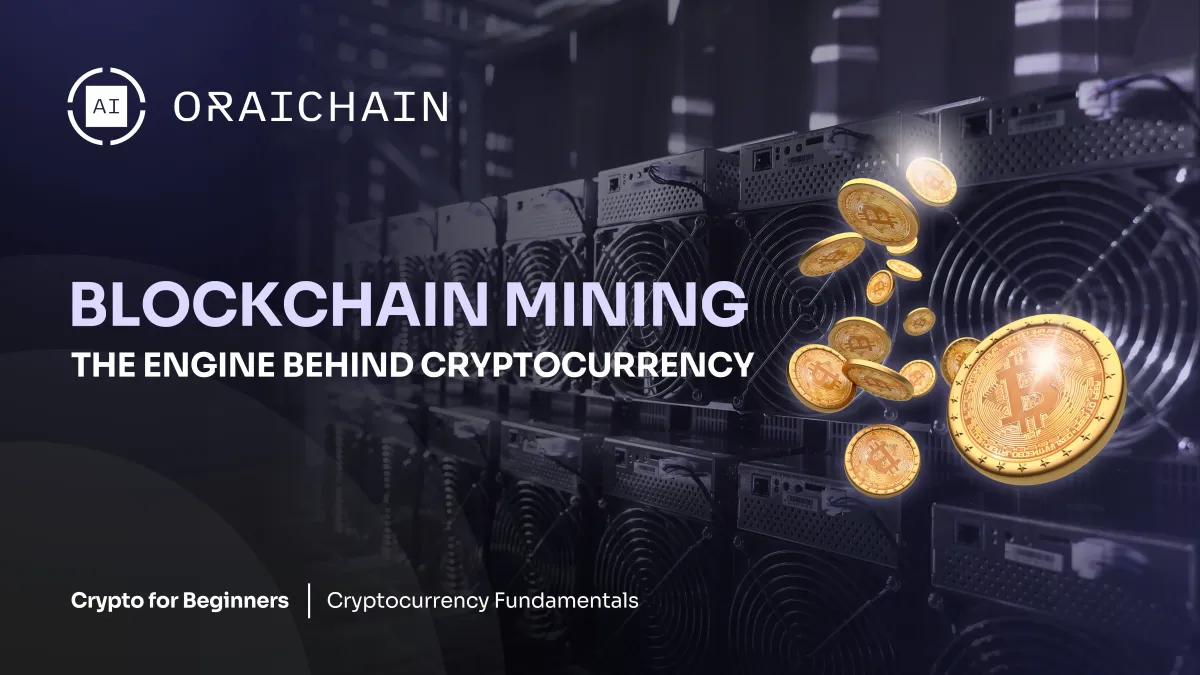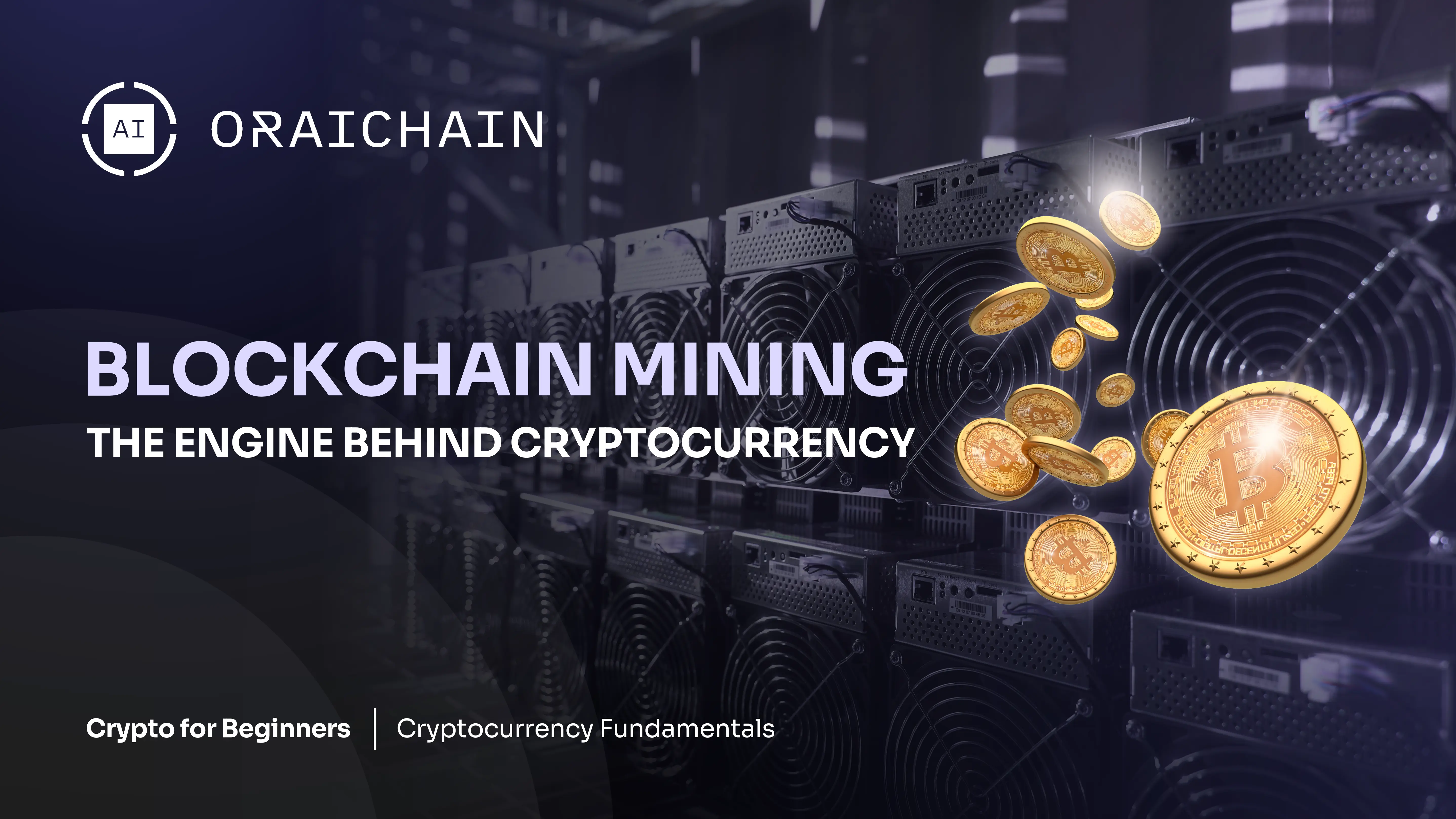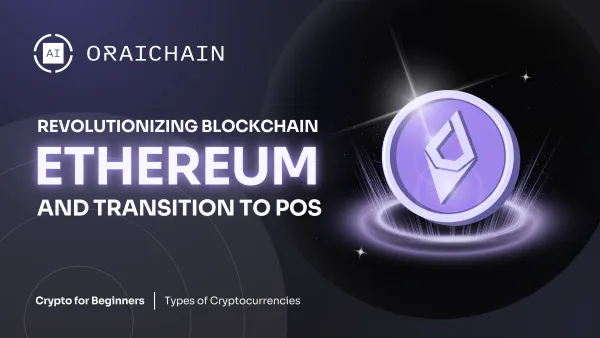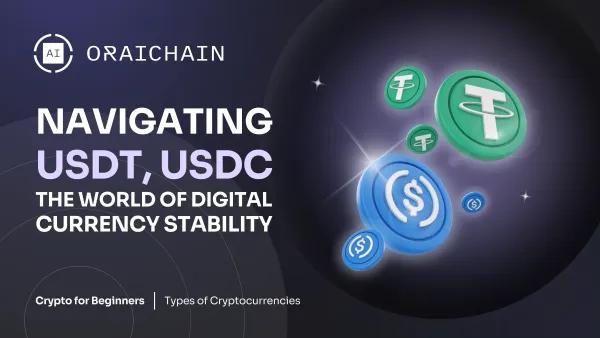Understanding Blockchain Mining: Crypto and Cryptocurrency Mining Explained


1 What is Cryptocurrency Mining?
Cryptocurrency mining, often referred to as crypto mining, is a process in which miners use computational power to add new transactions to the blockchain. It's a pivotal part of the blockchain's function, ensuring the integrity and security of the network. When we talk about "mining cryptocurrencies," we’re essentially discussing the process of solving complex mathematical puzzles that validate transactions and maintain the decentralized ledger. This is known as block mining, and it’s a crucial component of the blockchain technology that underpins cryptocurrencies like Bitcoin. Crypto miners are rewarded with newly minted coins for their efforts, providing an incentive to invest significant resources into mining cryptocurrency.
Bitcoin mining, which represents a significant portion of cryptocurrency mining activities, works through a consensus mechanism called Proof of Work (PoW). During the bitcoin mining process, miners compete to solve cryptographic puzzles, and the first one to solve it gets to add a block to the blockchain and earns a reward of newly minted bitcoins along with transaction fees. This cycle repeats approximately every ten minutes. Given the decentralized nature of blockchain, no single entity controls the network, making it secure and resilient to attacks.
The role of crypto miners in the blockchain ecosystem cannot be overstated. Without miners, the blockchain network would cease to function. Miners not only validate transactions but also help to propagate updates across the network, ensuring that all participants have a synchronized copy of the ledger. With the rise in popularity of mining cryptocurrencies, various methods have been developed, including solo mining, mining pools, and cloud mining, each with its own set of advantages and challenges. While mining cryptocurrency can be lucrative, it's also resource-intensive, often requiring significant investment in specialized hardware and electricity.
Understanding cryptocurrency mining is essential for grasping how blockchain technology works. It’s important to know that this process keeps the blockchain secure and operational, enabling the decentralized nature of cryptocurrencies. Whether you're interested in bitcoin mining or exploring other crypto mining opportunities, the principles of validation and the rewards system remain similar across different cryptocurrencies. Despite the complexities involved, the enthusiasm around mining cryptocurrencies reflects the tremendous potential and growing importance of blockchain technology in shaping the future of financial transactions.
2 How Does Mining Work?
Understanding how mining works is crucial to getting a firm grasp of the blockchain ecosystem. Mining bitcoin involves the use of powerful computers to solve complex mathematical problems. This process requires generating a cryptographic hash, which serves as a digital fingerprint for a block of transactions. Each time a block hash is successfully computed, it’s added to the blockchain. One key component of this process is the block reward, an incentive given to crypto miners who succeed in mining bitcoin. The bitcoin network adjusts the difficulty of mining approximately every two weeks to ensure blocks are mined at a consistent rate.
Individual miners often face significant challenges due to the computational power and energy required for effective mining. That’s where mining pools come in. Multiple miners combine their computational resources in a mining pool to increase their collective chances of solving a block hash and earning the block reward. Once a block is validated, the reward is distributed among the pool members based on their contributed computational power. This cooperative effort provides a more realistic avenue for smaller miners to participate in crypto mining.
Many crypto miners turn to specialized firms like EZ Blockchain for optimizing their operations. Such firms offer advanced technologies and solutions to enhance efficiency and reduce operational costs. They provide invaluable resources for anyone venturing into the intricate world of crypto mining. Blockchains rely on these miners to ensure each new block is legitimate, enhancing the trustworthiness of the network.
In conclusion, mining bitcoin is far more than just a race to solve a complex mathematical problem; it's a foundational element of how blockchains maintain their decentralized, secure nature. As the bitcoin network grows, so does the sophistication of mining operations, making partnerships with effective mining pools and firms like EZ Blockchain increasingly essential. By understanding these mechanisms, one can appreciate the intricate dance between hash computations and the rewarding system, highlighting the pivotal role miners play in sustaining the vibrant ecosystem of cryptocurrency.
The Role of Crypto Miners in the Blockchain
Crypto miners play a pivotal role in the blockchain ecosystem, ensuring the security and integrity of transactions across various cryptocurrencies. At the heart of cryptocurrency mining is the concept of block mining, where crypto miners work to solve complex mathematical problems. These problems revolve around the creation of a block hash, a unique string that verifies the legitimacy of the transactions within a block. Once solved, the block hash is appended to the blockchain, and the miner is rewarded with a specified amount of cryptocurrency. This decentralized process is essential for maintaining the trust and reliability of cryptocurrencies, as every transaction must be verified by multiple miners before it's accepted into the ledger.
To enhance efficiency and increase chances of successfully mining a block, many miners join mining pools. A mining pool combines the computational power of multiple miners, providing them with a collective opportunity to solve the block hash more quickly. When a mining pool successfully mines a block, the reward is distributed among all participating miners based on their contribution to the pool's overall hashing power. This collaborative approach makes it feasible for smaller miners to participate in cryptocurrency mining without needing vast computational resources.
Setting up mining facilities requires significant power to operate the high-performance hardware needed for mining activities. These facilities, where miners are housed, often require a reliable and substantial power supply to keep the mining rigs running consistently. The power consumption of mining operations has sparked discussions about the environmental impact and the need for sustainable energy solutions.
Crypto miners utilize specialized hardware and software clients to manage their mining tasks. These clients are designed to interact with the blockchain network, submitting proofs of work and retrieving new tasks as needed. The collective efforts of these miners ensure the continuity and security of blockchain networks, which rely on their computational power to process and verify transactions.
Overall, crypto miners are fundamental to the blockchain's operation. They not only validate and secure transactions but also enhance the decentralization and robustness of the cryptocurrency ecosystem. Without these dedicated miners, the entire structure underpinning cryptocurrencies would be at risk.
3 Proof of Work vs. Proof of Stake: Consensus Mechanisms Explained
In the ever-evolving world of blockchain, understanding the differences between Proof of Work (PoW) and Proof of Stake (PoS) is essential, especially for those diving into crypto and cryptocurrency mining. Both consensus mechanisms are designed to secure blockchain networks and validate transactions, but they do so in uniquely different ways. PoW is the underlying consensus mechanism for bitcoin and is known for its intensive computational requirements. Miners compete to solve complex mathematical puzzles, and the first one to solve it gets to add a new block to the blockchain, earning a block reward in crypto. These rewards often convert directly to USD, making the effort financially rewarding. However, PoW requires a significant amount of energy. The energy used in these computations has raised concerns about its environmental impact, leading to the exploration of alternative methods like PoS. PoS, on the other hand, is considered more energy-efficient and environmentally friendly. Instead of miners, PoS relies on validators who are chosen to create new blocks based on their total equity in the network. Validators are selected by holding and "staking" a certain amount of cryptocurrency, which acts similarly to investing in financial stake. The more crypto one holds and stakes, the higher the chances of being chosen to validate transactions. Comparing the two, PoW is known for its security and has been battle-tested since bitcoin's inception. However, its high energy consumption can’t be ignored. PoS aims to mitigate this issue. For individuals interested in equity, investing in PoS can be an appealing option due to its lower energy requirements and potential for financial returns. It’s also essential to consider the roles of block reward systems and the comparison between the average transaction speeds. PoW transactions might take longer due to the complexity of the puzzles, whereas PoS can potentially offer quicker validation times. Insurance policies for crypto investments also tend to differ based on the underlying consensus mechanism, affecting the total financial risk. Whether you're a novice or a seasoned investor, understanding these mechanisms fully can help you make informed decisions about which blockchain to support or invest in.
4 What is Bitcoin Mining?
Bitcoin mining is a fascinating process that ensures the security and legitimacy of Bitcoin transactions on the blockchain. By mining bitcoin, miners validate transactions and add them to the public ledger, known as the blockchain. But how exactly does bitcoin mining work? Let's dive into the details. At its core, bitcoin mining involves solving complex mathematical puzzles using powerful hardware. These puzzles are essential for verifying and securing transactions, ensuring the entire blockchain remains tamper-proof. When miners successfully solve these puzzles, they're rewarded with newly minted bitcoins, which incentivizes them to keep participating in the network. Bitcoin mining isn't just about solving puzzles, though. It's a highly competitive process where miners race against each other to find the right solution first. This competition is crucial because it keeps the network secure and decentralized, making it difficult for any single entity to control the blockchain. Miners play a vital role in the blockchain ecosystem. They're responsible for confirming bitcoin transactions and ensuring they're legitimate. When a transaction is initiated, it's broadcast to the entire network. Miners then gather these transactions into blocks and add them to the blockchain. This process not only secures the transactions but also prevents double-spending, a significant concern in the digital currency world. Bitcoin mining also relies on the Proof of Work (PoW) consensus mechanism. Under PoW, miners must demonstrate they've invested computational power to solve the puzzles. This approach ensures that the blockchain remains secure and that transactions are only added by those who've contributed genuine effort. However, bitcoin mining comes with its challenges. The process requires substantial investment in hardware and electricity, making it a resource-intensive endeavor. But for many, the potential rewards and the satisfaction of contributing to the security of a groundbreaking digital currency make it all worthwhile. As the world of cryptocurrencies continues to evolve, understanding the intricacies of bitcoin mining will be essential for anyone interested in digital currencies. By mastering the basics of this process, you'll be well on your way to becoming an informed participant in the exciting world of blockchain technology.
How Long Does It Take to Mine 1 Bitcoin?
Understanding how long it takes to mine 1 bitcoin involves various factors including the block reward, hashrate, power consumption, and the size of your mining setup. Bitcoin mining is the process by which new bitcoins are introduced into circulation, and it relies heavily on the concept of proof of work. Each time a miner successfully solves a cryptographic puzzle, they add a new block to the blockchain and are rewarded with a block reward, which currently stands at 6.25 bitcoins per block.
One of the pivotal elements influencing the time it takes to mine 1 bitcoin is the network's total hashrate. The higher the collective computational power of all miners, the more difficult it becomes to solve the puzzles, thus requiring more time and resources. As the hashrate increases, so does the complexity of the mining process. This is why individual miners often join mining pools to increase their chances of receiving a portion of the block reward.
Power consumption is another essential factor to consider. Efficient mining rigs consume vast amounts of power, and your geographic location can significantly influence your power costs. For instance, miners situated in Texas might find it beneficial due to relatively lower electricity rates compared to other regions. The cost of power can vary widely, and lower power costs can significantly reduce the expenses of bitcoin mining, allowing for faster ROI (Return on Investment).
The size and efficiency of your mining rig also play a crucial role. Larger setups with high-performance crypto mining hardware can complete more computational cycles within a given period, improving the odds of solving the cryptographic puzzles faster. Consequently, this enhances the speed at which you can accumulate bitcoin rewards into your account.
To summarize, the time it takes to mine 1 bitcoin hinges on multiple factors: block reward, hashrate, power consumption, and mining rig size. Even with a powerful setup and low power costs in places like Texas, the process is quite resource-intensive. Hence, thorough research and planning are vital for those venturing into the world of bitcoin mining.
5 The Basics of Mining Pools
When it comes to mining cryptocurrencies like Bitcoin, one of the most game-changing innovations is the mining pool. Mining pools are groups of crypto miners who combine their resources to increase the chances of successfully mining blocks and earning rewards. By pooling their computational power, these miners can solve complex mathematical problems more efficiently, leading to more frequent block mining. This collaborative approach is especially beneficial for individual miners who might find it challenging to earn significant rewards through solo mining. In a mining pool, each miner contributes their hashing power, and when a new block is successfully mined, the rewards are split among all participating miners based on their contribution to the pool's total power.
For those new to crypto mining, starting with a mining pool can be an excellent way to get your feet wet. Mining cryptocurrencies, especially Bitcoin, requires substantial computational power and energy consumption, which can be prohibitively expensive for solo miners. However, by joining a mining pool, miners can earn a more stable and predictable income. Mining pools also offer various services, such as miner performance tracking, real-time statistics, and technical support, which can make the mining process smoother and more efficient.
It's important to note that not all mining pools are created equal. The fee structure, payout methods, and overall reliability of pools can vary, so crypto miners should thoroughly research and choose a pool that aligns with their goals and preferences. Some pools may charge a percentage of the earnings as a fee, while others might have a fixed rate. The payout method can also differ; some pools distribute rewards immediately after block mining, while others might have a set payout schedule. Lastly, always consider the security and reputation of the mining pool to ensure that your contributions and earnings are safe.
In summary, mining pools offer a practical and efficient way for miners to participate in the competitive world of crypto mining. By joining a pool, miners can leverage collective computing power to earn rewards more consistently and minimize the risks associated with solo mining. Whether you're mining bitcoin or other cryptocurrencies, a good mining pool can significantly enhance your crypto mining experience.
6 Exploring Cloud Mining: Is It Worth It?
Cloud mining has become a buzzword in the cryptocurrency mining community, offering an attractive option for those who want to dive into crypto mining without the hassle of hardware management. But is it worth it? Cloud mining allows clients to rent mining hardware and energy from providers like EZ Blockchain, generating potential returns through the block reward system. Companies typically manage the hardware and ensure its state-of-the-art condition, helping clients to sidestep significant upfront financial investments.
One of the primary benefits of cloud mining is its simplicity. You don’t need to worry about the technical expertise required to set up your own crypto mining rig. You can start instantly by signing up through a simple email registration. Moreover, given the increasing energy demands of cryptocurrency mining, opting for cloud mining can be more energy-efficient. Renowned companies like Marathon Digital Holdings are strong players in this field, providing robust solutions to meet growing market demand.
However, it’s crucial to weigh the pros and cons. The blockchain world is rife with opportunities, but it’s also filled with risks. The financial outlay for cloud mining contracts can vary, and not all deals offer guaranteed returns. Block rewards fluctuate, and earnings depend on the cryptocurrency market's volatile nature. Additionally, some clients have raised concerns about the transparency and reliability of certain cloud mining companies, emphasizing the importance of thorough research before diving in.
Furthermore, the legality of crypto mining in your region can impact the feasibility of cloud mining. While it offers a hassle-free entry into the world of cryptocurrency mining, regulatory hurdles in various states can pose challenges. But in places where crypto mining is fully legal, cloud mining from reputable companies can be a fantastic way to engage in the blockchain industry without the complexities associated with traditional hardware setups.
In conclusion, cloud mining presents both opportunities and challenges. It's a worthwhile venture if you thoroughly research the company, understand the financial implications, manage energy concerns, and operate within legal frameworks. As the blockchain world evolves, cloud mining remains a viable entry point for novice and seasoned miners alike seeking flexibility and reduced direct engagement with mining hardware.
7 Is Crypto Mining Legal?
When it comes to the question, “Is crypto mining legal?”, the answer isn’t straightforward because the legality of cryptocurrency mining varies widely around the globe. Cryptocurrency mining, which involves using computer power to solve complex mathematical problems that validate and secure transactions on the blockchain, is regulated differently by country. In some nations, mining is completely legal and even encouraged, while in others, it’s heavily restricted or banned outright. The key is understanding your local laws and regulations to ensure you’re conducting mining activities legally.
Beyond regional legalities, there are considerations concerning financial regulations and tax implications that miners need to be aware of. In many jurisdictions, the financial authorities categorize income from mining as taxable income, meaning miners must report their earnings and possibly pay taxes on their mining profits. Neglecting to do so can lead to substantial fines or legal troubles, so accurate reporting and staying informed about tax obligations is crucial.
For instance, in the United States, the Internal Revenue Service (IRS) requires miners to report the fair market value of the mined cryptocurrency as gross income on the day the miner receives it. This holds true whether miners are mining Bitcoin, Ethereum, or other cryptocurrencies. Other nations have their own guidelines, so it’s essential that crypto enthusiasts stay knowledgeable about the tax laws in their respective countries.
In addition to financial regulations, miners must also consider the environmental impact and related legal restrictions. Some regions have placed restrictions on mining due to the high energy consumption and environmental footprint associated with mining operations. It’s recommended to use renewable energy sources or participate in mining activities that comply with local environmental laws.
Crypto mining’s legality can also depend on the methods used. While traditional Proof of Work (PoW) mining remains popular, some areas promote Proof of Stake (PoS) as it’s considered more energy-efficient and less controversial. Staying updated on current regulations and understanding the distinctions between different mining methods can help ensure a miner operates within legal boundaries. By addressing these various facets – financial regulations, tax laws, and environmental considerations – miners can confidently and legally engage in cryptocurrency mining while contributing to the blockchain ecosystem.
Explore beginner-level crypto knowledge at orai.io to confidently start your journey with expertise!



